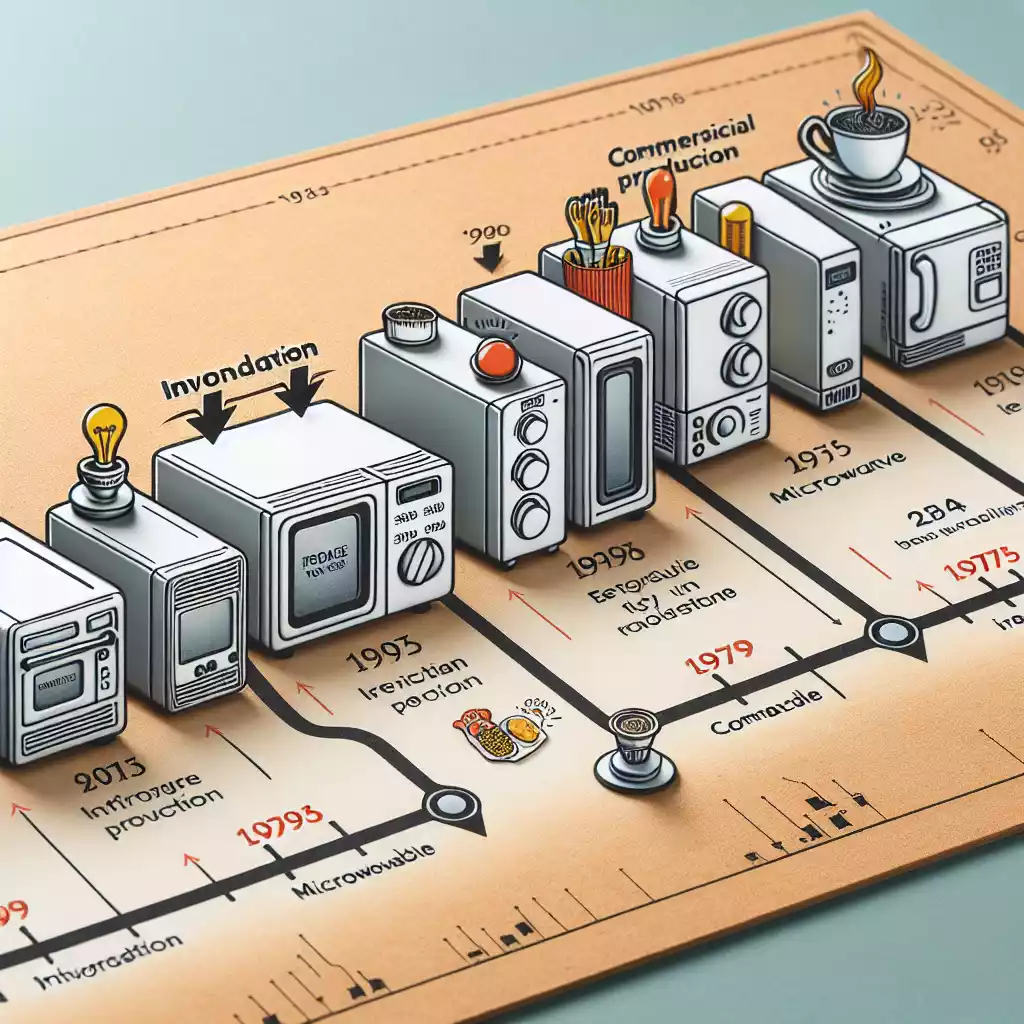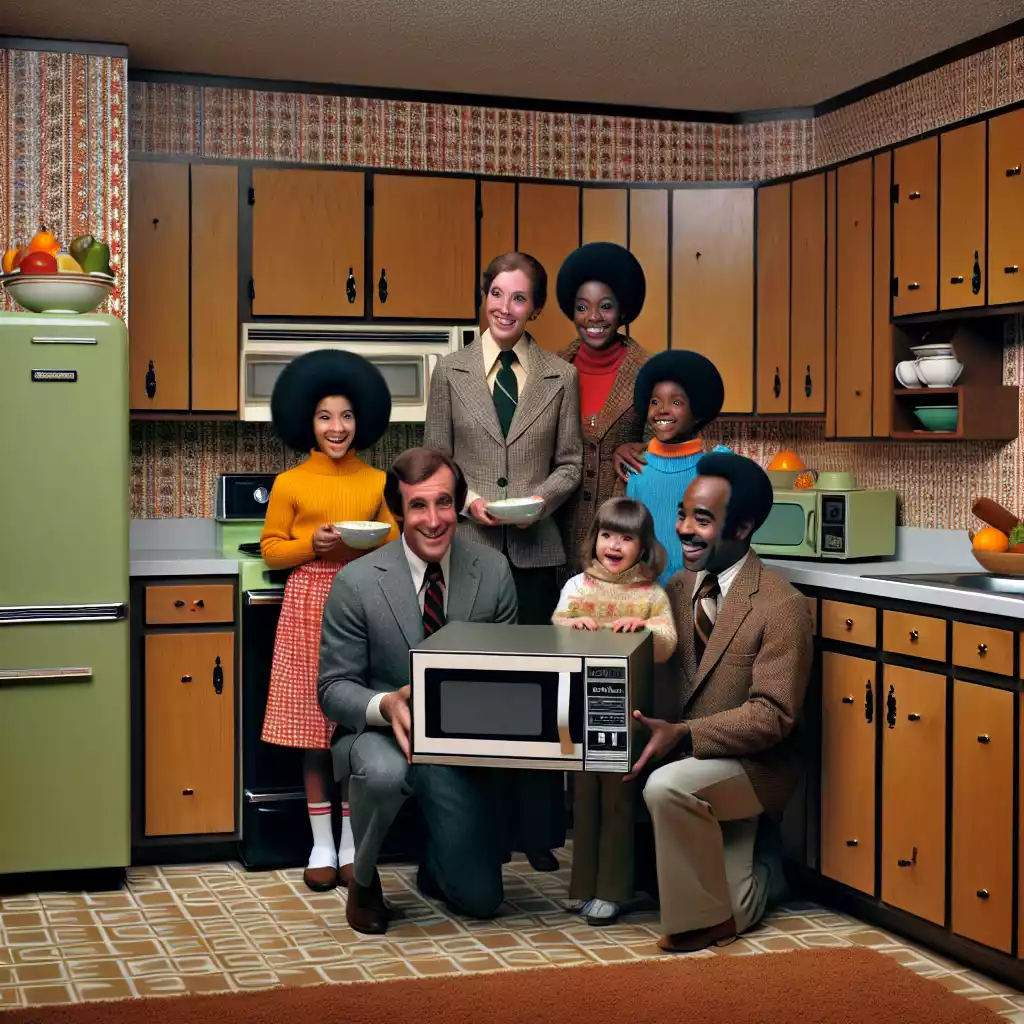The Invention of the Microwave Oven
Early Development and Initial Costs
Microwave ovens, a staple in modern kitchens, have an intriguing history. The journey began in the 1940s with Percy Spencer, an engineer at Raytheon, who discovered that microwaves could cook food. The first commercial microwave, the Radarange, hit the market in 1947. It was a colossal, expensive machine, standing almost six feet tall and costing around $5,000. This hefty price tag made it accessible only to commercial kitchens and the wealthy.
The First Commercial Microwave
The Radarange, introduced in the late 1940s, was a revolutionary device but far from affordable for the average household. It was primarily used in restaurants and for industrial purposes. This microwave weighed over 750 pounds and required significant space and power to operate. Its high cost was a major barrier to widespread adoption.
The Evolution of Microwave Technology
Advancements in Microwave Engineering
Over the decades, microwave technology evolved significantly. Engineers focused on reducing the size and cost of these appliances. The introduction of smaller magnetrons, improved waveguides, and better insulation materials were crucial in this evolution. These advancements allowed manufacturers to produce more compact and cost-effective models.
Key Innovations in Microwave Design
Design innovations played a pivotal role in making microwaves more affordable. The transition from bulky, industrial designs to sleek, countertop models made them more appealing to consumers. Features like turntables, preset cooking modes, and digital timers enhanced usability, driving demand and further reducing costs through economies of scale.
Market Penetration and Public Reception

Introduction to the Consumer Market
Microwaves started penetrating the consumer market in the 1960s. Early adopters were intrigued by the convenience and speed of microwave cooking. However, the high prices, ranging from $500 to $1,000, still kept them out of reach for many households. It wasn’t until the late 1970s that prices began to drop significantly.
Advertising and Marketing Strategies
Effective marketing strategies played a crucial role in the adoption of microwaves. Advertisements highlighted the convenience, speed, and versatility of microwave cooking. Demonstrations in stores and cooking classes showcased their practical uses, gradually convincing more consumers to invest in this new technology.
Factors Contributing to Affordability
Mass Production Techniques
Mass production techniques revolutionized the manufacturing of microwaves. By the 1980s, factories were churning out microwaves on a large scale, significantly reducing production costs. Standardization of components and assembly lines made it possible to produce affordable units without compromising on quality.
Competition and Market Dynamics
Increased competition among manufacturers also contributed to the affordability of microwaves. Companies like Sharp, Panasonic, and GE entered the market, each vying for a share. This competition led to price wars, driving down costs and making microwaves accessible to a broader audience.
Price Trends Over the Decades
1960s and 1970s
In the 1960s and early 1970s, microwaves were still considered luxury items. Prices remained high, but gradual improvements in technology and manufacturing processes began to lower costs. By the mid-1970s, prices had dropped to around $300 to $500, making them more attainable for middle-class families.
1980s and 1990s
The 1980s and 1990s saw a significant drop in microwave prices. By the mid-1980s, a basic microwave could be purchased for around $200. Technological advancements, increased competition, and mass production techniques all contributed to this decline. By the 1990s, microwaves were a common household appliance, with prices ranging from $100 to $300.
Technological Milestones
Key Technological Breakthroughs
Several technological breakthroughs contributed to the affordability of microwaves. The development of more efficient magnetrons, improved insulation, and better control systems reduced production costs. Additionally, advancements in electronics allowed for more precise and reliable microwave operation.
Digital Control Panels and Efficiency Improvements
The introduction of digital control panels in the 1980s marked a significant milestone. These panels made microwaves easier to use and more energy-efficient. Efficiency improvements, such as better insulation and more effective waveguides, also contributed to reduced operating costs and increased affordability.
Socio-Economic Impact
Changing Household Dynamics
Affordable microwaves transformed household dynamics by simplifying meal preparation. Families could quickly reheat leftovers, cook frozen meals, and prepare snacks with minimal effort. This convenience allowed for more time to be spent on other activities, changing the way people approached cooking and dining.
Microwave Cooking Culture
The rise of microwave cooking culture in the 1980s and 1990s led to the development of a wide range of microwave-friendly foods. From popcorn to microwave dinners, the food industry adapted to meet the needs of microwave users. This cultural shift further solidified the microwave’s place in the modern kitchen.
Current Trends and Future Prospects
Modern Microwave Features
Modern microwaves come with a plethora of features that add value without significantly increasing costs. These features include sensor cooking, convection capabilities, and smart technology integration. Despite these advancements, microwaves remain affordable, with basic models available for under $100.
Future Innovations and Predictions
Looking ahead, future innovations in microwave technology may focus on further improving efficiency, reducing energy consumption, and enhancing smart capabilities. As technology continues to advance, microwaves are likely to remain a staple in kitchens worldwide, offering even more convenience and functionality at affordable prices.
Relevant Data Table
| Decade | Average Price | Key Features |
|---|---|---|
| 1960s | $500 – $1,000 | Basic heating, large size |
| 1970s | $300 – $500 | Smaller size, basic controls |
| 1980s | $200 – $300 | Digital controls, turntables |
| 1990s | $100 – $300 | Improved efficiency, more features |
| 2000s | $50 – $200 | Sensor cooking, smart features |
FAQs
FAQ 1: When was the first microwave oven sold?
The first microwave oven, the Radarange, was sold in 1947.
FAQ 2: How much did the first microwave oven cost?
The first commercial microwave oven cost around $5,000.
FAQ 3: What innovations made microwaves more affordable?
Innovations such as smaller magnetrons, mass production techniques, and digital control panels significantly reduced the cost of microwaves.
FAQ 4: How did mass production affect microwave prices?
Mass production techniques allowed manufacturers to produce microwaves on a large scale, reducing production costs and making them more affordable for consumers.
FAQ 5: What are some modern features of microwaves?
Modern microwaves feature sensor cooking, convection capabilities, smart technology integration, and energy-efficient designs.
Conclusion
The journey of the microwave oven from a luxury item to an affordable household appliance is a fascinating story of technological innovation, market dynamics, and changing consumer habits. Today, microwaves are an essential part of modern kitchens, offering convenience and efficiency at a reasonable price.

